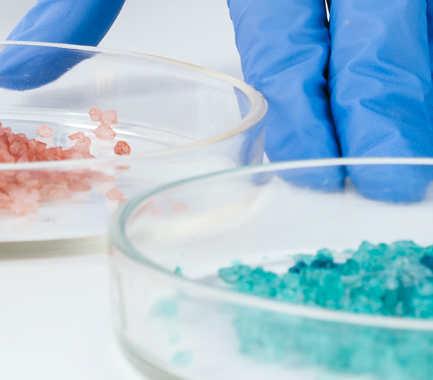Your contact
PENPET-Team - Hamburg

Laurens Rogowski
Sales
Tel. +49 (0) 40 - 675 7 99 80
sales@penpet.de
Get in touch with us.
Sebacic acid
Sebacic acid is a regular dicarboxylic acid that is used in the chemical industry, primarily for the production of plastics and plasticizers. The substance is mainly obtained from sodium sebacate, which is produced by splitting ricinoleic acid with the help of sodium hydroxide. Ricinoleic acid is the main component of castor oil and is therefore a biologically renewable raw material. In addition, there are other processes for the production of sebacic acid, for example by oxidation of 1,10-decanediol and stearic acid, by decarboxylation of monomethyl adipate or in the course of fermentation processes.
Sebacic acid finds an important use in the production of polyamides. For example, the polyamide (nylon) 6.10 can be produced from sebacic acid or sebacic acid dichloride and hexamethylenediamine. Acid diesters with alcohols such as 1-butanol or 2-ethylhexanol are used as plasticizers. In polycondensation with glycerine, biologically well-tolerated plastics for surgery and medical research can be produced from sebacic acid. The esters of the acid serve as plasticizers, extenders, and lubricants. Sebacic acid is also used in paints, candles and cosmetic products.
PENPET has been importing sebacic acid for many years. We look forward to receiving your inquiry for an individual offer. It is delivered as a powder or in the form of beads in sacks and Big Bags with different filling weights.
CAS no. 111-20-6
EINECS no. 203-845-5
Molecular formula: C10H18O4
Synonyms: Sebacic Acid, Decanedioic Acid, 1,8-Octanedicarboxylic Acid, Sebacic Acid
Areas of application: Production of polyamides and polyesters, use of the esters as plasticizers, extenders and lubricants
More Information
Sebacic acid is a regular dicarboxylic acid with ten carbon atoms, two of which already belong to the carboxy groups at the ends of the linear molecular structure. In terms of molecular size, it can be classified between the dicarboxylic acids azelaic acid and undecanedioic acid. With its two functional groups, sebacic acid is suitable for the production of both diesters and polyesters.
Sebacic acid is a white solid that comes in crystalline forms or as a powder. The compound has a fatty acid-like odor. Sebacic acid is only poorly soluble in water, but readily soluble in ethanol and diethyl ether.
Under normal conditions, sebacic acid is stable. The compound should be stored at temperatures below +30 °C. Contact with reducing agents, alkalis and strong oxidizing agents can cause violent reactions and should be avoided.
Sebacic acid is non-flammable and not an explosion hazard. However, the formation of explosive air-dust mixtures is possible due to the whirling up of fine particles. The dry powder can also be electrostatically charged. The combustion and thermal decomposition of sebacic acid can produce irritating and harmful vapors and gases such as carbon monoxide and carbon dioxide.
Sebacic acid dust is irritating to the respiratory system, skin and eyes. In the event of direct contact, immediately flush the eye thoroughly with water and consult an ophthalmologist to prevent serious eye irritation. Swallowing sebacic acid can cause health problems. In case of accidental ingestion, induce vomiting and drink plenty of water. Sebacic acid is readily biodegradable in the environment.
